Selma Blair Explains Her Meaningful New Clothing Line

Selma Blair and Isaac Mizrahi
“I’m good. I’m doing really well. I really am in a fortunate space.”
It means a little more when Selma Blair is the one saying these words. The veteran actress, after all, has been through an epic health journey in the past five years. In 2018, she revealed that she had been diagnosed with multiple sclerosis, a chronic autoimmune disease of the central nervous system. Three years later, after undergoing an extensive stem-cell transplantation procedure and chemotherapy, Blair announced that her MS was in remission. Today, she talks openly about having Miege syndrome—which involves involuntary spasms of the tongue, jaw and pharynx and face. It affects the way she speaks, and yet her scrappy and self-deprecating attitude shines through.
Related: Symptoms of MS Can Be Subtle—so Here Are the Signs Doctors Want You To Know About
“The last couple years,” she says, “I grew up a lot. I became a woman. So, I’m having a fascinating time loving and accepting all these things that have come to me. I have a lot of happiness and hope. Now I think about how I can use my platform for being a voice.” She quickly jokes, “It’s really funny to me because my voice is all over the place!”
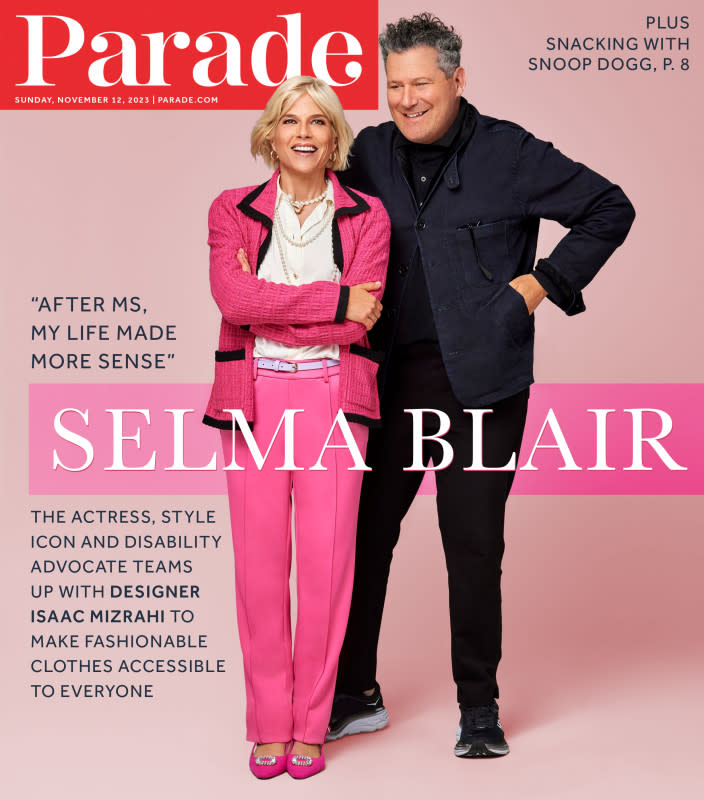
COVER PHOTOGRAPHY BY JONATHAN PUSHNIK/QVC
Her latest advocacy step is in the style world. Blair, the QVC Brand Ambassador for Accessibility, and her longtime friend, famed designer Isaac Mizrahi, have teamed up for the accessible fashion collection Isaac Mizrahi Live! x Selma Blair. No ordinary celebrity-endorsed line, it was developed through collaborative efforts with the disability community. The machine-washable clothes—which began exclusively debuting on QVC in early October—include accessible features like easy-open necklines, magnetic closures, stretch fabrics and flat seams. The pants are also available in versions for people in wheelchairs.
Related: Selma Blair Strikes a Fierce Pose in Leopard Print Jacket Paired With Satin Pants
And true to Blair’s fashion MO, the wardrobe is effortlessly casual and cool: “The clothes are very chic and fashionable and, oh my God, changed my game. And I hate saying ‘changing my game!’”
The clothing is a hit. “Our customers love seeing Isaac and Selma’s genuine relationship, their authenticity and listening to the story behind this collection. They have a shared passion for style and clothing that makes women feel their most beautiful and confident,” says Rachel Ungaro, GMM and VP of Fashion Merchandising for QVC. “We look forward to bringing more universal options to fashion and delivering beautiful style in accessible clothing.”
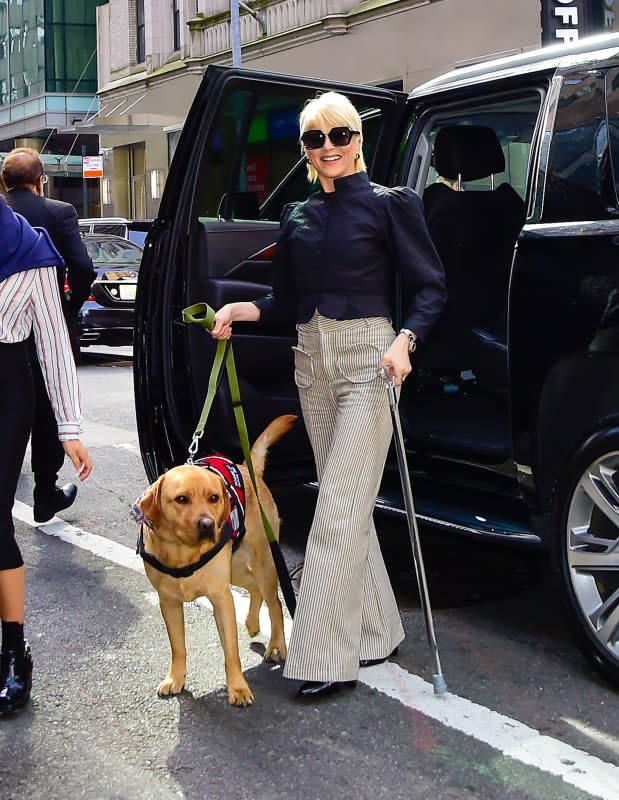
Getty Images
Long before the collection, Blair found a way to express herself. After growing up in suburban Southfield, Michigan, Blair—the youngest of four girls—decided at age 22 to eschew Midwest domesticity and head to New York City to pursue a career in the arts. Within the next decade, she appeared in millennial classics such as Cruel Intentions, Legally Blonde and The Sweetest Thing. Though Blair didn’t headline any of them, she made her mark as a fearless comedic talent. “I was like, ‘Well, here’s the second act of my life,’” she says. “I’m going to be an actress. It was a surprise to me!”
Over the years, she settled down, too. Blair, 51, currently resides in Los Angeles with her 12-year-old son, Arthur, and service dog, Scout. She frequently travels to New York and QVC headquarters in West Chester, Pennsylvania, and even recently headed to Washington, D.C., to meet with President Biden and honor the legacy of the Americans with Disabilities Act and the Rehabilitation Act. “I’d love to live on a lake in Michigan and have a calm life,” she says. “But I’m just too talkative for one state!” On a Thursday morning in October, Blair spoke to Parade about the collection, and her life.
Mara Reinstein: How did the idea of the collection come to you?
Selma Blair: I was lucky enough to get a TV show a few years ago and I really, really needed that job because I was diagnosed at the same time. The wardrobe people had to help me get dressed because I couldn’t move and pull my pants off. I realized I couldn’t do this at home. So, I started wearing things with magnetic buttons and getting all this information. I wanted our clothes to have these adaptive features. And they’re not meant strictly for people with disabilities or arthritis or poor vision. This is just our way of getting people dressed fast.
Why do you and Isaac fit together so well?
Years ago, I had him make a dress for me, and it was my favorite. I’ve always loved him. And I wanted every woman to feel as beautiful as I always felt wearing his clothes. He brings something extra and he’s just a great American designer and has such a top-shelf personality. That’s why this just seemed like the most auspicious, wonderful thing to happen.
Has fashion always played a major role in your life?
Always. I was a very animated child and, in some ways, also very withdrawn. The wardrobe was my costume. So, I had this actress personality and fashion was something I could cling to that everyone understood. But my mom would never let me buy really expensive, trendy things. It was, like, one Burberry coat every three years and the rest was my sisters’ hand-me-downs. I watched Lisa Bonet on The Cosby Show with rips in her clothes and thought I could do that, too.
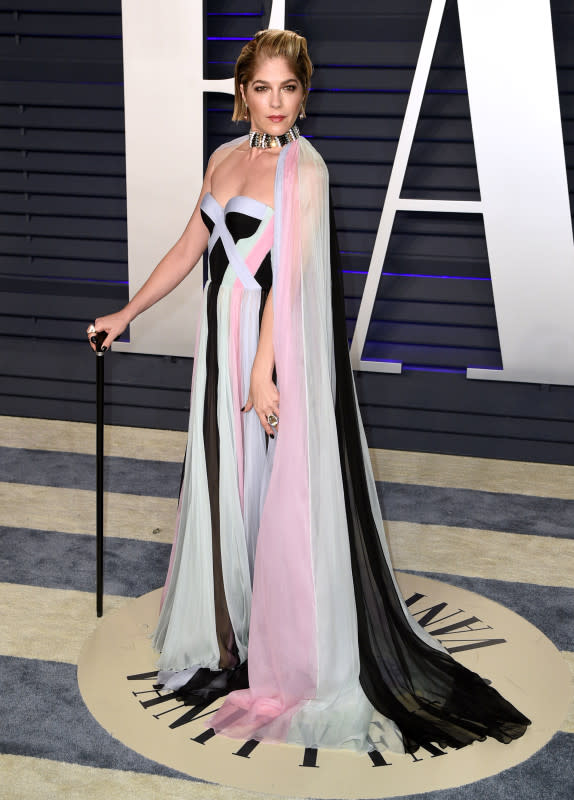
Getty Images
When was your first big style risk?
I went to a nice Jewish school and in junior high I dyed my hair blonde. I thought it was pretty. My mother liked it! But the principal had a talk with me because she couldn’t believe I would do something so dramatic. It was a horrible time in my life. People were like “What is wrong with you?” It was so out of bounds. Like, it was such a big deal that I remember thinking, I never want to do that again. Know your audience. I transferred schools because I realized I needed a bigger audience where people wouldn’t think I was a freak just because I wanted to look like Grace Kelly.
What did your mom think of you going into acting? It didn’t run in the family.
I probably did get it from my mom because she was a judge so she was always in front of people, and she did command a room. But we didn’t have that type of family at all. The focus was on education, period. And then you go into the professional life. Acting was not anything a parent would dream for their child in the Midwest. But once I decided in college [University of Michigan] to go to New York, my mom packed my suitcase that very night and sent me off. I stayed at a Salvation Army in Gramercy Park.
Did the roles come easily to you?
I went on 79 auditions before I got my SAG card. Seventy-nine! I wrote it in my journal. There was a big picture of Parker Posey from Party Girl in there, too, because she was my inspiration. She was unusual and showed that women can find ways to get out of the [conventional] box.
And yet in your breakout role in Cruel Intentions, you played a young teen.
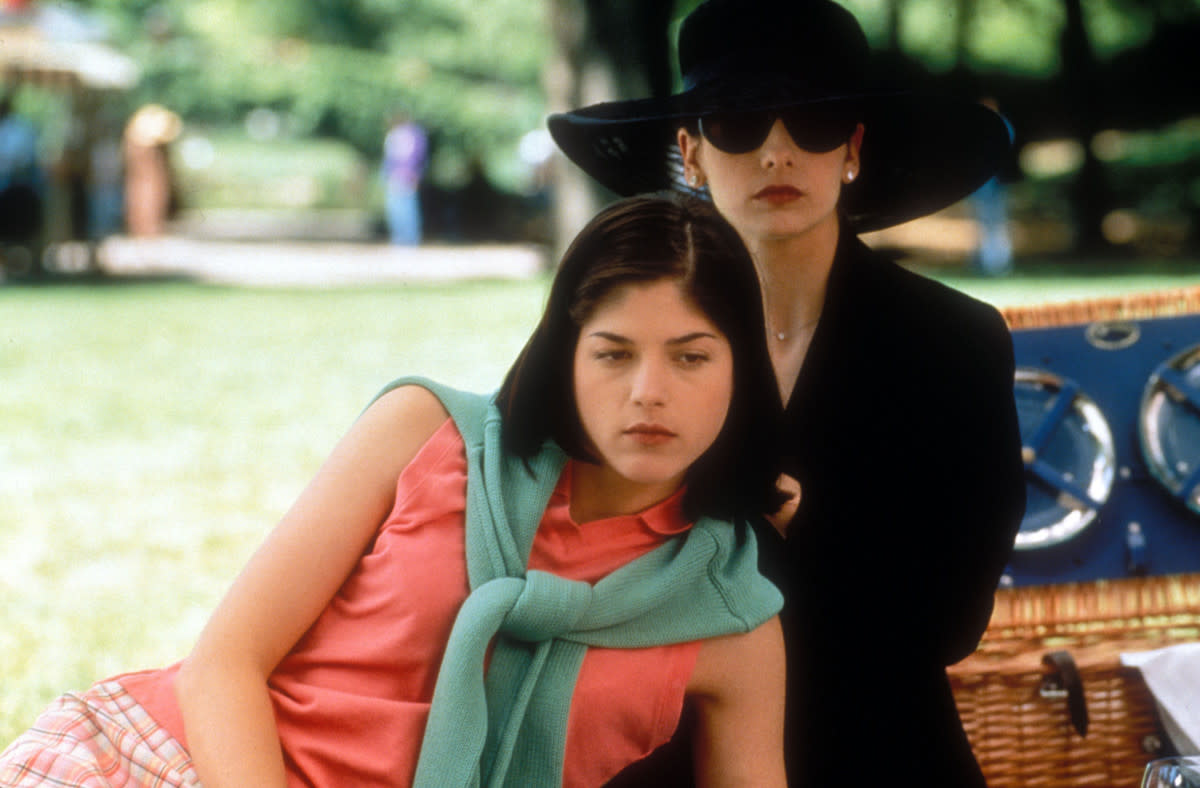
Sony Pictures Releasing
Yeah, I was like 23 when I did it! And everyone just thinks, Oh my God, I’ve watched you since you were little. And I’m like, You lived in Southfield?! Because I had a grown-up, educated, formed, totally civilian life until I was the proper age. The only hindrance was my own inability to put down a drink or two. So, I always felt like I was a witness in Hollywood. I mean, I had genuine fandom for [costar] Reese Witherspoon because I had watched her.
Related: Everything to Know About the Reported 'Cruel Intentions' Series
What was your pinch-me moment?
I was on a WB show called Zoe, Duncan, Jack & Jane [in 1999] and the ads were all over the subways and in Times Square. That was mind-boggling to me. I wish someone from my school would have known what a big deal it was!
How did the acting struggle prepare you for what was to come later?
It prepared me for a lot. I was so naive, but I always had a hardship in my head. I understood that life wasn’t going to be easy. I was so reckless in ways because I was terrified of the big world, but I had such a curious, active brain. I never felt like I fit in anywhere. Then, after my diagnosis, I became so embraced by people in the MS and the Parkinson’s community. My life made more sense—I loved being a voice for other people because no two disabilities are the same. And it’s given me such empathy.
How so?
You know, if you see people with noticeable disabilities, it doesn’t mean you have to stop and stare on the street. And there should be beautiful ramps everywhere! Have a ramp at the Oscars. The Oscars aren’t for the actors—they’re for the people at home. If you integrate things into the design of our lives, it opens a mindset and people become more accepting.
Is it fair to say that even though you’re a successful actress, the activism has given you a renewed purpose?
Sure, I did have those nights where I’d wish, Whoa I’d love to have more roles. Of course, I would have loved some type of stardom. But I was not tied to it in that way. I never thought of an Oscar speech in my life. Never crossed my mind. Then I felt like I needed to take that next step in my life and do what feels good. So, I did. I did come out and tell people I had MS even though people said not to because no woman wants to feel like they’re not capable of getting a job. That’s why it’s important for me to go to the White House and remind people that we do need legislation for all these things—and need clothes to go to these events!
What was the White House experience like for you?
My mother was a very Republican judge and my dad [an attorney] was a Democrat Zionist, but I grew up learning that no matter what, the White House was a sacred place. So, I was very, very happy to be invited. And when “Hail to the Chief” started playing, it was just so surreal. I had no idea I’d be walking with the president with my service dog and my cane! But it felt incredible to stand before these history-makers and the leaders in the disability community and celebrate our goals. It touched me so much, and I did not take it lightly.
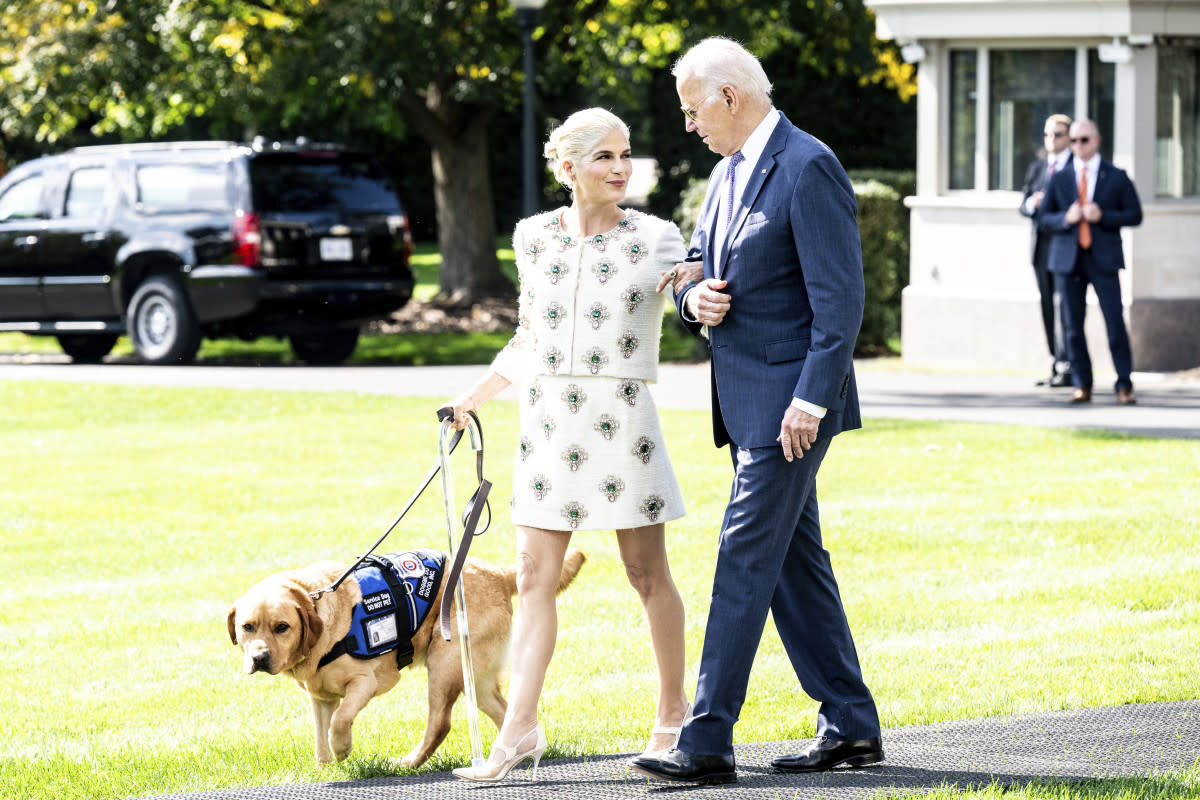
The White House
There’s a photo of your dog resting comfortably on the president’s feet!
In the past I would have broken down in tears and been like What do I do? But I’m a grown-up so I stood there with a microphone and said, “Release!” It was funny. He was charming and handled it beautifully.
What’s left for you to accomplish?
Oh my gosh. I want chic. I want room to play. There are things beyond my pay grade but people with disabilities should have ostentatious fun. I’d love to have a collaboration with a company to make a wheelchair. I want to make a kick-ass thing for everyone so we can all get on the same talking page. To have luxury goods coveted by all but especially the disabled community can be a real equalizer.
It sounds like you’re in a good place physically and emotionally.
I’ve really made a turn for the better in the past year. I’m sensitive and tired lately, but excited and hopeful, and feel like I need to uplift people. I wake up each morning with growing stamina. I’m so grateful for it.
Bonus: How Isaac Mizrahi Got "Inspired" by Blair
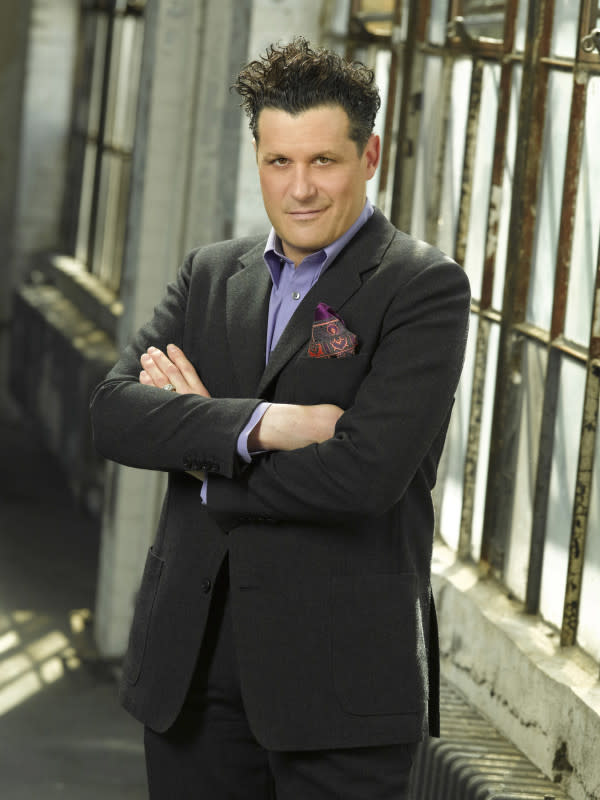
Bravo/Everett
When Isaac Mizrahi started in fashion more than 30 years ago, he brought a singular goal to the worktable: “I’ve always wanted to reach out to new demographics of people that should have access to clothes,” he says. “It’s all about democratizing fashion to make it more inclusive.”
The gregarious designer, actor, director, host, writer, Project Runway judge and producer—who burst into the mainstream with his hit 1995 documentary, Unzipped—has checked off that box many times over thanks to his mega-successful partnerships with Target and QVC. But his Isaac Mizrahi Live! x Selma Blair collection for QVC, which combines style with accessibility solutions, is a special highlight.
“This is a growing concern,” he says. “I think it’s a wonderful thing to make things easier and better for differently abled people to experience selection. This is my chance to help any way I can.” He also boasts, “You don’t need to sacrifice any kind of style at all. The clothes are incredibly great-looking. I’m so shallow, right? I just like great-looking clothes!”
Best of all? Mizrahi, 62, gets to work with one of his favorites. He and Blair first met when he designed the actress’ dress her for her premiere of The Sweetest Thing in 2002, and reunited for the 2004 Council of Fashion Designer Awards. Then, as he tells it, he was hanging out in a downtown New York City hotel a few years ago and saw her approaching with a walking cane. “I knew she had been going through all these tribulations because of her condition but I couldn’t believe that she still managed to look so amazing,” he recalls. “She started talking about how difficult her clothes were and how she had all these ideas about making them more useful to her and the differently able communities. One thing led to another.”
Because of the collaboration, Mizrahi raves, he now sees his friend on the regular. “Selma is wickedly funny and so fun and a style icon,” he says. “I’m inspired just being around her.”
Next, Iconic Designer Isaac Mizrahi Says 'Originality Is Not Something You Can Learn Or Buy'
